Burns can occur at any time, in any place and to anyone. In providing burn prevention, information, education and materials, it is important to know your audience (e.g., adults, children, college students, older adults, people with disabilities, diverse cultural or language populations), as well as which burn prevention messages are most appropriate (scald prevention, youth firesetting, kitchen safety, etc).
The first step to burn safety is preventing an injury from happening. Burn injury prevention involves implementing a comprehensive strategy that includes components from each of the “Five E’s.”
The Five E’s of Burn Injury Prevention




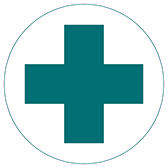
Education Providing educational materials, classes, brochures, information via media venues, etc.
Engineering Modifying the environment or installing equipment such as sprinklers, smoke alarms, etc.
Enforcement Instituting mandatory codes, laws, regulations, standards; and monitoring for compliance
Economic Incentives Implementing financial incentives to motivate behavior change; financial incentives can be positive (coupons or discounts for buying smoke alarms or installing sprinklers) or negative (fees, fines or penalties for not complying)
Emergency Response When injuries do occur, implementing an effective emergency response (e.g., EMS providers, fire departments, law enforcement, emergency medical care) helps to mitigate the severity and maximize positive outcomes.
For more information on Community Risk Reduction, developing strategies and implementing a comprehensive prevention and education plan, visit the Vision 20/20: National Strategies for Fire Loss Prevention website.
Prevention of burns can be done most effectively through education, which increases awareness to this devastating injury and motivates behavior change. According to the World Health Organization, burn injury is a major global public health concern. Legislative efforts have helped to enforce safety measures in manufacturing products for consumers. Development of product safety guidelines and the enforcement of codes and laws are making a difference in burn prevention. But, providing the first “E” – “Education” – is key to changing individual behavior to create a safer environment for all.
Burn centers provide burn care outreach education to fire fighters, first responders, EMS providers, community hospitals, students (medical, nursing, therapists, etc.) and other groups. Topics typically covered include: scene safety, stopping the burning process, initial care/triage/treatment, transfer guidelines, burn injury etiology, burn depth, determining burn severity, expected treatment, strategies to optimize outcomes and methods to prevent future injuries. Contact your local burn center to request training.
Prevention Tips and Tools
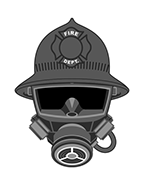
Fire Service and EMS
The Fire Service and EMS have a dual role of preventing work-related burns and educating the public about burn prevention. According to the National Fire Protection Association (NFPA), in 2018 there were 58,250 fire fighter injuries reported in the U.S – 23,300 of which were fire ground injuries.
- National Institute of Standards and Technology (NIST)
- Vision 20/20
- International Association of Fire Fighters (IAFF)
- Burn Prevention and Tips
- Wellness-Fitness Initiative; a holistic, positive rehabilitation and educational approach to wellness and fitness programs in the fire service
- U.S. Fire Administration (USFA)

Children
According to the Centers for Disease Control, every day, 300 children (ages 0 to 19) are treated in emergency rooms for burn-related injuries. Every day, two children die as a result of being burned. Younger children are more likely to sustain injuries from scald burns caused by hot liquids or steam. Older children are more likely to sustain injuries from flame burns.
- National Fire Protection Association (NFPA)
- U.S. Fire Administration (USFA)
- Keeping Kids Safe from Fire
- Sesame Street Fire Safety Program for preschool children
- Centers for Disease Control (CDC)
- Safe Kids Worldwide
- Vision 20/20
- Safety Messages for kids and young children materials generator

College Students
- U.S. Fire Administration (USFA)
- National Fire Protection Association (NFPA)
- Vision 20/20
- Fire prevention materials generated for young adults with materials generator
- The Michael H. Minger Foundation
- A collection of fire safety material for college students, including posters, videos and guides
- Campus Firewatch
- A social enterprise that works to improve fire safety at schools and in communities.
- Centers for Disease Control (CDC)

Older Adults
Older adults are at risk for burn injury from the normal changes associated with aging, such as mobility changes, cognitive changes and physical changes.
Special Burn Prevention Education Considerations
Burn prevention is not a one-size-fits-all program. Knowing your audience and burn injuries that affect them will help guide your selection of messages, materials and method of presentation to create safety awareness and change behaviors.
Appropriate Messaging for Age and Target Market
The National Fire Protection Association (NFPA) publishes the Educational Messages Desk Reference that includes fire safety education messages to provide fire and life safety educators with accurate and consistent language. Fire safety messages include: Home Smoke Alarms, Home Fire Sprinklers, Home Fire Escape, Burns, etc. In addition, NFPA provides a number of Tip Sheets on a number of fire safety messages in a number of languages and reading levels.
Using Burn Survivor Images in Burn Prevention Education
Using images of burn survivors as well as having burn survivors participate in burn prevention education can be powerful in conveying your message. There are special considerations to keep in mind when using burn survivor images and stories. The Phoenix Society has outlined the “do’s and don’ts” of using burn survivor images and stories in your burn prevention education presentations.
Customizable Prevention Materials Generator
Developed by a team of fire safety and communications experts using messages that were tested with different audiences, Vision 20/20 materials can be used to enhance your community risk reduction and home safety visit programs. Using the Materials Generator tool, you can generate customized door hangers, fliers and activity guides using proven fire safety messages with your logo and information that you can then download and print out.
Tip Sheet:
Burn Education Resources
 The American Burn Association (ABA) is dedicated to improving the lives of everyone affected by burn injury. The ABA has a number of prevention materials, including Award-Winning Burn Prevention Posters.
The American Burn Association (ABA) is dedicated to improving the lives of everyone affected by burn injury. The ABA has a number of prevention materials, including Award-Winning Burn Prevention Posters.
 The American Red Cross prevents and alleviates human suffering during emergencies by mobilizing the power of volunteers and through the generosity of donors. Visit their website for information on Fire Safety and Prevention.
The American Red Cross prevents and alleviates human suffering during emergencies by mobilizing the power of volunteers and through the generosity of donors. Visit their website for information on Fire Safety and Prevention.
 Centers for Disease Control and Prevention (CDC) saves lives and protects people from health threats. The CDC provides burn prevention and fire prevention materials. The CDC also publishes the Childhood Injury Report.
Centers for Disease Control and Prevention (CDC) saves lives and protects people from health threats. The CDC provides burn prevention and fire prevention materials. The CDC also publishes the Childhood Injury Report.
 (CPSC) has a fire safety information center with information on off-campus housing and fire safety guides. The CPSC also maintains www.SaferProducts.gov.
(CPSC) has a fire safety information center with information on off-campus housing and fire safety guides. The CPSC also maintains www.SaferProducts.gov.
 An innovative national program designed expressly to help fire and life safety educators, burn
An innovative national program designed expressly to help fire and life safety educators, burn
clinicians and injury prevention professionals reach adults with life-saving information they need to prevent scalds in and around homes.
 Federation of Burn Foundations serves as an organization to help bring together a number of burn organizations to share information and resources between each of them and with the public.
Federation of Burn Foundations serves as an organization to help bring together a number of burn organizations to share information and resources between each of them and with the public.
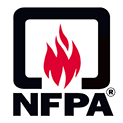 The National Fire Protection Association (NFPA) has a wide variety of information and fire prevention resources for consumers and public educators. The NFPA also has a variety of community tool kits and Tip Sheets (in multiple languages) that can be downloaded for handouts.
The National Fire Protection Association (NFPA) has a wide variety of information and fire prevention resources for consumers and public educators. The NFPA also has a variety of community tool kits and Tip Sheets (in multiple languages) that can be downloaded for handouts.
 Safe Kids is a global organization dedicated to preventing injuries in children. Safe Kids Worldwide provides burn prevention education for children ages 0-19 years old and their parents.
Safe Kids is a global organization dedicated to preventing injuries in children. Safe Kids Worldwide provides burn prevention education for children ages 0-19 years old and their parents.

The U.S. Fire Administration (USFA) develops and delivers fire prevention and safety education programs. USFA works with public and private groups to improve fire prevention and safety through research, testing and evaluation. USFA sponsors the national Fire is Everyone’s Fight™ campaign
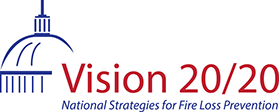 Vision 20/20 is a project of the Institution of Fire Engineers-USA comprised of fire service and related agency leaders that guide a national strategic planning process for fire loss prevention. Vision 20/20 provides customizable fire prevention materials that can be used to enhance your Community Risk Reduction and Home Safety Visit programs.
Vision 20/20 is a project of the Institution of Fire Engineers-USA comprised of fire service and related agency leaders that guide a national strategic planning process for fire loss prevention. Vision 20/20 provides customizable fire prevention materials that can be used to enhance your Community Risk Reduction and Home Safety Visit programs.
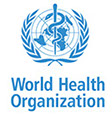 The World Health Organization (WHO) directs and coordinates international health within the United Nations’ system. WHO provides data collection on burns and international statistics on burns worldwide.
The World Health Organization (WHO) directs and coordinates international health within the United Nations’ system. WHO provides data collection on burns and international statistics on burns worldwide.

